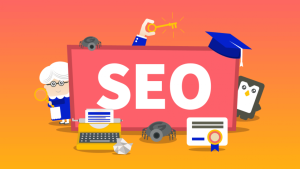In today’s digital age, businesses must understand the dynamics of the online marketplace to maximize their success. This article will delve into the strategies needed to transform website clicks into valuable conversions on the world’s leading digital selling platforms and e-commerce marketplaces.
With the rapid growth of online shopping, the online marketplace has become a highly competitive arena. To stand out and drive sales, businesses need to optimize their presence on digital selling platforms and e-commerce marketplaces.
The key to success lies in a comprehensive approach that spans web design, search engine optimization (SEO), conversion rate optimization (CRO), and paid advertising. By mastering these fundamental elements, businesses can boost their online visibility, attract targeted traffic, and ultimately increase conversions and revenue.
Key Takeaways:
- Understanding the dynamics of the online marketplace is crucial for business success in the digital age.
- Optimizing web design, SEO, CRO, and paid advertising are essential strategies to drive online sales.
- An effective online presence on digital selling platforms and e-commerce marketplaces is vital to stand out in the competitive online marketplace.
- By implementing targeted strategies, businesses can boost online visibility, attract targeted traffic, and increase conversions and revenue.
- Continuous adaptation to changing trends and consumer behaviors is key to staying ahead in the online marketplace.
The Role of Web Design in Amplifying Business Sales
Effective web design plays a crucial role in enhancing a business’s sales through various avenues. A visually appealing and user-friendly website creates a positive first impression, increasing the likelihood of making a purchase. An optimized user experience, including easy navigation and fast loading times, improves conversion rates. Mobile optimization ensures that customers can access your website on any device, leading to more sales. Consistent branding and engaging content presentation also contribute to increased sales.
Visual Appeal and User-Friendly Design
A visually appealing website captures the attention of visitors and creates a positive perception of your brand. By utilizing aesthetically pleasing colors, typography, and imagery, you can create an engaging visual experience that motivates users to explore and stay on your site. A user-friendly design further enhances the browsing experience, making it easy for visitors to find information, browse products, and complete purchases.
“A visually appealing and user-friendly website creates a positive first impression, increasing the likelihood of making a purchase.”
Optimized User Experience
The user experience (UX) of a website plays a significant role in determining its conversion rates. A well-designed website with intuitive navigation and clear calls to action guides visitors through the buyer’s journey, making it easier for them to convert. Additionally, fast loading times are crucial, as slow-loading websites often lead to high bounce rates and missed sales opportunities. Ensuring a seamless and enjoyable browsing experience encourages visitors to stay longer, browse more products, and ultimately make purchases.
Mobile Optimization
In today’s mobile-centric world, it is essential to optimize your website for mobile devices. Mobile optimization ensures that your website is responsive and adapts to different screen sizes, providing a seamless experience for users on smartphones and tablets. By catering to the growing number of mobile users, you broaden your reach and increase the likelihood of capturing sales from this segment of your target audience.
“Mobile optimization ensures that customers can access your website on any device, leading to more sales.”
Consistent Branding and Engaging Content
Consistency in branding across your website creates a cohesive and memorable experience for users. From your logo and color palette to your brand voice and messaging, maintaining a consistent brand identity reinforces familiarity and trust. Engaging content, such as compelling product descriptions, informative blog posts, and captivating visuals, further enhances the user experience. By providing valuable content that resonates with your audience, you establish credibility, build trust, and increase the likelihood of driving sales.
How SEO Techniques Enhance Visibility
SEO techniques play a vital role in boosting online visibility and driving targeted traffic to your website. By implementing effective SEO strategies, you can improve your website’s ranking in search engine results pages (SERPs), leading to increased organic traffic and higher visibility for your business.
One of the key SEO techniques is optimizing your website’s content with relevant keywords. By conducting thorough keyword research and incorporating these keywords strategically throughout your website, you can attract the right audience and increase the likelihood of your website appearing in relevant search results.
Meta tags, including title tags and meta descriptions, also play a crucial role in SEO. These tags provide concise summaries of your web page’s content and help search engines understand the relevance of your website for specific queries. By optimizing your meta tags with keywords and compelling descriptions, you can improve your website’s visibility in SERPs and entice users to click through to your site.
Another essential aspect of SEO is local SEO, which is particularly beneficial for physical businesses looking to attract customers in specific geographical areas. By optimizing your website’s content with location-specific keywords and creating Google My Business listings, you can increase your visibility in local search results and connect with potential customers in your area.
In addition to optimizing technical aspects of your website, content marketing through SEO is a powerful strategy to enhance your visibility. By creating high-quality, informative, and engaging content that appeals to your target audience, you can position your business as an authority in your industry. This not only attracts visitors seeking valuable information and solutions but also increases the likelihood of other websites linking to your content, improving your website’s authority and visibility in search engine rankings.
In summary, SEO techniques are instrumental in increasing the visibility of your website and driving targeted traffic. By optimizing your website’s content, meta tags, and utilizing local SEO and content marketing strategies, you can enhance your online presence and attract visitors who are more likely to convert into customers.
Enhancing Sales Through Effective SEO Strategies
Implementing effective SEO strategies is essential for businesses aiming to boost their online sales. By adopting strategic SEO practices, you can improve your website’s online visibility, making it more discoverable to potential customers. This increased visibility leads to a significant boost in website traffic, resulting in higher chances of attracting and converting targeted visitors into satisfied customers.
With targeted traffic generated through your SEO efforts, you can expect a higher conversion rate and, subsequently, increased sales and revenue. Additionally, a higher search engine ranking gained through SEO enhances your business’s credibility and establishes a competitive advantage over competitors in the online marketplace.
SEO enables your business to connect with a broader audience by increasing your website’s visibility on search engine results pages (SERPs). The more visible your website is, the higher the chances of attracting potential customers who are actively searching for products or services that your business offers.
| Advantages of Effective SEO Strategies: |
|---|
| Improved online visibility |
| Increased targeted traffic |
| Higher conversion rates |
| Enhanced sales and revenue |
| Established credibility and competitive advantage |
By implementing effective SEO strategies, your business can capitalize on the numerous benefits it offers, resulting in sustained growth and success in the highly competitive online marketplace.
Introduction to Conversion Rate Optimization (CRO)
Conversion rate optimization (CRO) is a crucial aspect of any successful digital marketing strategy. It focuses on maximizing the number of website visitors who take a desired action, such as making a purchase or filling out a form. By analyzing user behavior and identifying barriers to conversions, businesses can implement targeted changes that increase the conversion rate and drive success in the online marketplace.
CRO is all about understanding your audience and optimizing your website to meet their needs and expectations. By continuously testing and refining your website and marketing strategies, you can ensure that every visit to your site has the highest potential for conversions. Whether it’s adjusting your website layout, improving the checkout process, or optimizing your forms, CRO allows you to make data-driven decisions that lead to increased conversions and ultimately, business success.
“The aim of marketing is to know and understand the customer so well, the product or service fits them perfectly and sells itself.” – Peter Drucker
By prioritizing CRO in your digital marketing efforts, you can turn your website traffic into valuable conversions. Instead of just focusing on driving more traffic to your site, CRO enables you to make the most of the visitors you already have. This approach is not only cost-effective but also results in a higher return on investment (ROI) by maximizing the effectiveness of your marketing budget.
To succeed in the competitive digital marketplace, businesses must prioritize conversion rate optimization as part of their overall digital marketing strategy. By enhancing the user experience, removing barriers to conversions, and constantly testing and refining your approach, you can increase conversions and achieve long-term success.
The Importance of CRO Metrics
Measuring and tracking key metrics is an essential part of implementing a successful CRO strategy. By understanding the data and insights provided by these metrics, businesses can identify areas for improvement, track progress, and make informed decisions to optimize conversion rates.
Here are some essential CRO metrics to focus on:
- Conversion Rate: Measures the percentage of website visitors who complete a desired action, such as making a purchase or filling out a form. This metric provides an overall indication of how well your website is converting visitors into customers.
- Bounce Rate: Indicates the percentage of visitors who leave your website without taking any further action. A high bounce rate may suggest that your website needs improvement or that your targeting is not effectively attracting the right audience.
- Average Session Duration: Measures the average amount of time visitors spend on your website. This metric gives insight into how engaged visitors are with your content and can indicate the effectiveness of your website’s user experience.
These metrics, along with others like click-through rate and average order value, help businesses assess the effectiveness of their CRO efforts and identify areas for improvement. By regularly monitoring and analyzing these metrics, businesses can optimize their conversion rates and drive success in their digital marketing campaigns.
Key Metrics to Measure Conversion Rates
Measuring conversion rates is essential to evaluate the effectiveness of your digital marketing efforts. By tracking key metrics, you can gain valuable insights into the success of your marketing campaigns, the engagement level of your visitors, and the overall performance of your digital strategies.
“Tracking conversion rates allows you to understand how well your website and marketing efforts are converting visitors into valuable actions, such as purchases or form submissions.”
Conversion Rate
The conversion rate is a fundamental metric that represents the percentage of visitors who complete a desired action on your website. This action can include making a purchase, signing up for a newsletter, or filling out a contact form. By monitoring and optimizing your conversion rate, you can measure the effectiveness of your marketing tactics in driving desired outcomes.
Bounce Rate
The bounce rate measures the percentage of visitors who leave your website after viewing only one page, without taking any further action. A high bounce rate indicates that visitors are not engaging with your content or finding it relevant to their needs. Analyzing and reducing bounce rates can help improve the user experience, increase engagement, and ultimately drive conversions.
Average Session Duration
The average session duration provides insights into how engaged visitors are with your content. It measures the average length of time visitors spend on your website during a single session. A longer average session duration indicates that visitors are spending more time exploring your website and consuming your content. By optimizing your content and user experience to increase the average session duration, you can enhance engagement and increase the likelihood of conversions.
The Importance of Paid Advertising in the Online Marketplace
In the crowded online marketplace, paid advertising plays a crucial role in helping brands reach their desired audience and stand out from the competition. With immediate visibility and a broader reach, paid advertising offers businesses the opportunity to connect with potential customers effectively.
One of the key advantages of paid advertising is its ability to provide targeted reach. Advertisers can segment and target specific audiences based on demographics, interests, and behaviors. This targeted approach ensures that ads are shown to the right people, increasing the chances of engagement and conversion.
Paid advertising also offers measurable results, allowing businesses to track the effectiveness of their campaigns. Through analytics and data-driven insights, decision-makers can gain valuable information about ad performance and make informed adjustments to optimize their strategies. This ability to measure results enables businesses to allocate resources more effectively and achieve their marketing objectives.
Furthermore, utilizing paid advertising provides businesses with a competitive advantage. By strategically placing ads and leveraging effective targeting, businesses can outshine their competitors and establish themselves as leaders in their industry. The immediate visibility offered by paid advertising allows brands to position themselves in front of their target audience, capturing attention and influencing purchasing decisions.
The importance of paid advertising in the online marketplace cannot be overstated. It offers immediate visibility, targeted reach, measurable results, and a competitive advantage, helping businesses drive sales, increase brand awareness, and achieve their marketing goals.

Key Strategies for Paid Advertising Success
When it comes to paid advertising, understanding your objectives and target audience is crucial for achieving success. By defining clear goals and customizing campaigns based on audience preferences and behaviors, businesses can create compelling ad copy and visuals that resonate with their target market.
One key strategy for paid advertising success is audience targeting. By identifying and understanding your target audience, you can tailor your ads to reach the right people at the right time. This ensures that your ads are more relevant and likely to generate conversions.
Another important aspect of paid advertising is optimizing for mobile. In today’s digital era, where mobile usage is prevalent, it’s essential to ensure that your ads are mobile-friendly. This includes creating responsive ads that adapt to different screen sizes and optimizing landing pages for mobile users.
Utilizing retargeting strategies can also greatly enhance your paid advertising success. By targeting users who have already shown interest in your brand or products, retargeting helps to keep your brand top-of-mind and encourages them to take action.
A/B testing is another valuable tactic for optimizing your paid advertising campaigns. By testing different variations of ad copy, visuals, and targeting options, you can identify the most effective combinations that yield the highest conversion rates.
Integrating paid advertising with organic strategies like SEO and content marketing can also enhance your overall marketing efforts. By aligning your paid ads with your organic content, you can create a cohesive and holistic approach to reach and engage your target audience.
Here’s a practical example of how these strategies can come together:
Let’s say you’re a fashion retailer looking to drive sales through paid advertising. Your objective is to increase website traffic and conversions. To achieve this, you define your target audience as women aged 18-35 who are interested in fashion and follow influential fashion bloggers on social media.
You create an ad campaign that features engaging visuals of your latest collection and compelling ad copy that speaks to the desires and aspirations of your target audience. By optimizing your ads for mobile, you ensure a seamless user experience for mobile users.
Using retargeting, you target users who have previously visited your website or have interacted with your brand in some way. This keeps your brand top-of-mind and encourages users to revisit your website and make a purchase.
Through A/B testing, you experiment with different variations of your ad copy, visuals, and targeting options to identify which combinations yield the highest conversion rates. You use data and insights from A/B testing to refine and optimize your ad campaigns further.
Finally, you integrate your paid advertising efforts with organic strategies like SEO and content marketing. You create blog posts and social media content that align with your ad campaign’s messaging and drive traffic to your website. This cohesive approach amplifies your overall marketing efforts and maximizes reach and conversions.
To summarize, achieving success in paid advertising involves setting clear objectives, targeting the right audience, optimizing for mobile, utilizing retargeting strategies, conducting A/B testing, and integrating paid advertising with organic strategies. By implementing these key strategies, businesses can enhance their paid advertising efforts and drive meaningful results.
Key Strategies for Paid Advertising Success
| Strategy | Description |
|---|---|
| Audience Targeting | Identify and understand your target audience to create relevant and effective ads |
| Mobile Optimization | Ensure your ads are mobile-friendly and provide a seamless user experience on various devices |
| Retargeting | Target users who have previously shown interest in your brand or products to encourage conversions |
| A/B Testing | Experiment with different variations of ad copy, visuals, and targeting options to optimize performance |
| Integration with Organic Strategies | Align paid advertising efforts with organic strategies like SEO and content marketing for a cohesive approach |
Conclusion
The online marketplace offers both challenges and opportunities for businesses to thrive in the digital landscape. By harnessing effective strategies such as web design, SEO, conversion rate optimization (CRO), and paid advertising, businesses can achieve success and unlock the full potential of the digital world. The key goals of enhancing sales, boosting online visibility, maximizing conversion rates, and staying competitive can be achieved through a comprehensive digital marketing approach.
Understanding the dynamics of the online marketplace is crucial for businesses looking to make their mark. Effective web design creates a positive user experience, making it easier to convert clicks into sales. SEO techniques enhance visibility and attract targeted traffic to generate valuable conversions. Conversion rate optimization (CRO) ensures that more visitors take the desired action, boosting the overall conversion rate. Paid advertising offers immediate visibility and targeted reach, giving businesses a competitive edge.
Combining these strategies reinforces a business’s digital marketing efforts and increases its chances of success in the online marketplace. By investing in web design, implementing SEO techniques, optimizing conversion rates, and utilizing paid advertising, businesses can connect with their target audience and achieve their goals.
Image of a digital marketing strategy emphasizing conversion rate optimization (CRO).
By staying agile and adapting to changes in the online marketplace, businesses can remain competitive and drive growth. Continuous monitoring and analysis of key metrics such as conversion rates, bounce rates, and average session duration provide valuable insights for optimizing digital marketing strategies. Utilizing A/B testing, retargeting, and integrating paid advertising with organic strategies like SEO and content marketing can further enhance paid advertising success.
Ultimately, mastering the dynamics of the online marketplace requires businesses to adopt a holistic approach and leverage various digital marketing strategies. With the right combination of web design, SEO, conversion rate optimization (CRO), and paid advertising, businesses can maximize their online presence, attract the right audience, and achieve their desired results in the competitive online marketplace.
Conclusion
In today’s digital age, businesses must master the dynamics of the online marketplace to achieve success. A well-designed website coupled with effective SEO techniques can enhance visibility and attract targeted traffic. However, driving sales requires more than just visibility. Conversion rate optimization (CRO) plays a crucial role in turning website visitors into valuable conversions. By implementing data-driven strategies and staying agile in response to changing trends, businesses can maximize the effectiveness of their digital marketing efforts.
Paid advertising offers immediate visibility and targeted reach, allowing businesses to connect with their desired audience. It provides measurable results, enabling businesses to track the success of their campaigns and make data-driven decisions. Integrating paid advertising with organic strategies like SEO and content marketing enhances overall marketing efforts, providing a competitive advantage in the online marketplace.
To thrive in the digital landscape, businesses need to navigate the complexities of the online marketplace. By mastering web design, SEO, conversion rate optimization, and paid advertising, businesses can unlock the potential of the digital world. Stay informed, adapt to changing trends, and connect with your target audience to drive growth and achieve success in the online marketplace.
FAQ
What is the role of web design in amplifying business sales?
Effective web design plays a crucial role in enhancing a business’s sales by creating a visually appealing and user-friendly website. It improves the user experience, increases conversion rates, and ensures mobile optimization for maximum accessibility.
How do SEO techniques enhance online visibility?
SEO techniques enhance online visibility by optimizing various aspects of a website, such as keywords, meta tags, and content quality. This improves the website’s ranking in search engine results pages (SERPs), leading to increased organic traffic and targeted visitors who are more likely to convert into customers.
How can businesses enhance sales through effective SEO strategies?
By implementing effective SEO strategies, businesses can improve online visibility, generate targeted traffic, and increase sales. Higher search engine rankings and credibility gained from appearing prominently in search results give businesses a competitive advantage, attracting more customers in the online marketplace.
What is conversion rate optimization (CRO) and why is it important?
Conversion rate optimization (CRO) is the process of analyzing user behavior, identifying barriers to conversions, and implementing targeted changes to increase the conversion rate. It is important as it helps businesses maximize the number of website visitors who take a desired action, leading to increased conversions and ultimately boosting the bottom line.
What are the key metrics to measure conversion rates?
The key metrics to measure conversion rates include the conversion rate itself, which represents the percentage of visitors who complete a desired action, the bounce rate, which measures the percentage of visitors who leave a website without taking further action, and the average session duration, which indicates how engaged visitors are with the website’s content.
What is the importance of paid advertising in the online marketplace?
Paid advertising plays a crucial role in the crowded online marketplace as it offers immediate visibility and a broader reach for brands looking to connect with their desired audience. It provides targeted reach, measurable results, and helps businesses establish themselves as leaders in their industry, outshining competitors.
What are the key strategies for paid advertising success?
Key strategies for paid advertising success include having a clear understanding of objectives and target audience, customizing campaigns based on audience preferences and behaviors, optimizing for mobile, utilizing retargeting strategies, conducting A/B testing, and integrating paid advertising with organic strategies like SEO and content marketing.
How can businesses succeed in the online marketplace?
By mastering the dynamics of the online marketplace through effective strategies such as web design, SEO, conversion rate optimization, and paid advertising, businesses can thrive in the digital landscape. Enhancing sales, boosting online visibility, maximizing conversion rates, and staying competitive are key goals in achieving success in the online marketplace.



